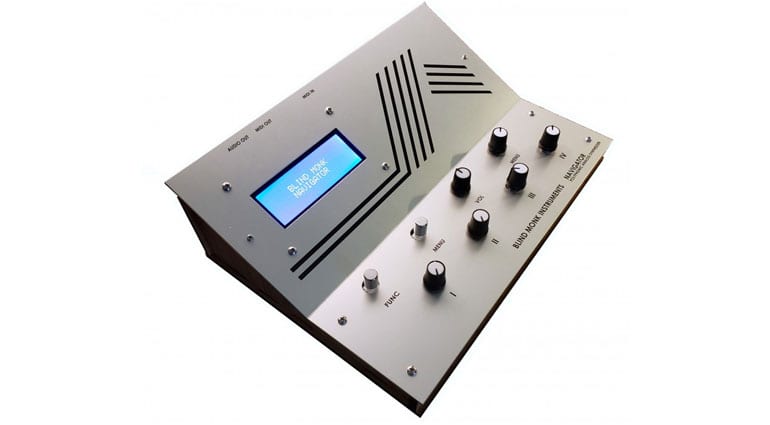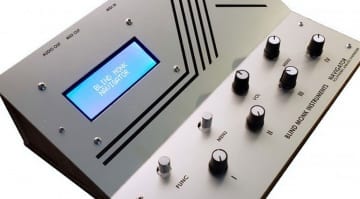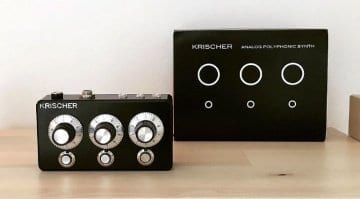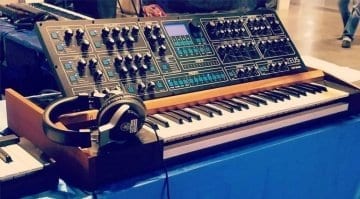Navigator: polyphonic analog synthesizer from Blind Monk Instruments
Navigator is an unusual looking polyphonic analog synthesizer. It has only a handful of knobs, a screen and a 70’s sci-fi look about it. In the current analog trend for fields of knobs and hands-on control, this seems very odd indeed – let’s have a closer look.
Navigator
Within the box there are 2 digitally controlled oscillators per voice plus a sub and a ring modulator. Each voice gets 3 LFOs, 2 ADSR envelopes and a 2-pole resonant low pass filter. The waves can be shaped between saw, double saw, pulse and ring modulation with some unique shapes. It has 4 voices that can be run in a poly mode, duophonic, unison or monophonic mode. Each voice can be setup separately with individual tuning and pitch control. Rounding off the features there’s a 64-step sequencer, chord mode, an artificially intelligent sequence generator (cool!) and sequencer automation control over all the main menu functions.
You are currently viewing a placeholder content from YouTube. To access the actual content, click the button below. Please note that doing so will share data with third-party providers.
Blink Monk Instruments says that it’s designed to be affordable, easy to use and have loads of modulation possibilities.
What we have is a menu-driven synthesizer. The 4 knobs along the bottom correspond to the 4 lines of the display and let you control whatever function you’ve selected. So you dial through various pages for the oscillator, envelopes, LFOs, filter etc. Michael of Blink Monk Instruments says that it’s really easy to use and I guess the notion of stepping through pages in a menu is very straight forward, but it does feel rather digital in approach. The sequencer appears to be a free form affair when you turn it to record, play some notes and turn it to play and off it goes with no idea what steps you’ve filled or how you edit those – but I’m sure that’s all in there somewhere.
With the interesting AI-based sequence generator you have to dial in the page, select which algorithm to use, wait for it to do the maths and then come back up out of the menu and back into the sequencer menu to put it into play. If that one’s no good then you have to dial back to the AI page, try another algorithm and then skip back to the sequencer page again. It’s a bit exhausting!
For modulation you can route the 3 LFOs to any parameter you like. In fact you can set it to modulate the “last knob turned” but how do you find that knob without turning other knobs to get there? I’m sure these things will become clear.
Navigator sounds pretty good as far as I can tell from the short video above and the longer one below. But I am struggling a bit with the interface. In the video Michael says that we should check out the links in the description for sound examples and video of the Navigator in action – except there aren’t any links to anything. To get over the limitations of the interface and put across the awesomeness of the sound it really needs some decent sound demos. They need to send one out to people who love making demo videos and can tease a variety of analog sounds out of the machine. As it is it’s odd, interesting, but not really selling itself to me. At $595 it’s a good price but also very similar to the Korg Minilogue XD which has all that knob appeal. It looks great but I need to see more of this thing in action to really know its value.
More information
- Blind Monk Instruments website.
Video
You are currently viewing a placeholder content from YouTube. To access the actual content, click the button below. Please note that doing so will share data with third-party providers.
 5,0 / 5,0 |
5,0 / 5,0 | 








